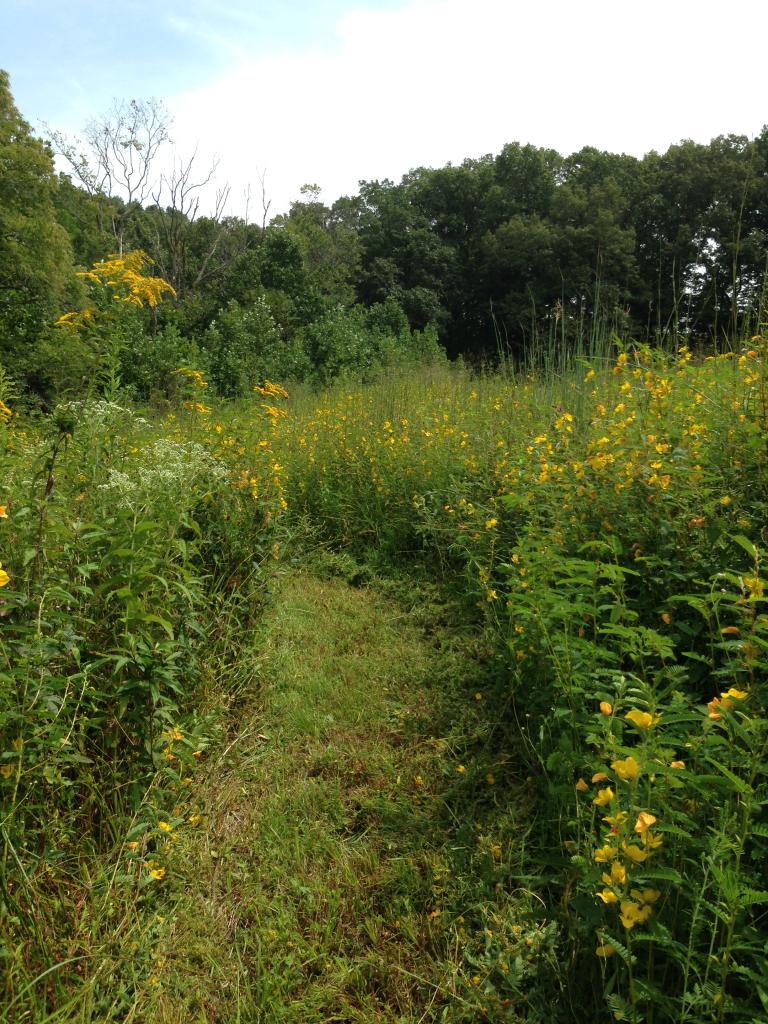I attribute it to the following things:
- I have some extremely hardy tall native forbs that were already there before the NWSGs, and some of the forbs added are improved cultivars that hardly resemble their wild counterparts. For instance, most wild partridge pea grows about knee high. It is easily shaded out by taller grasses and relegated to minor places. The cultivar of PP that I added grows over 6 feet high and is extremely aggressive. This year I will have so much of it that it is breathtaking when it flowers out. The Blackeyed Susans I planted also seem to be more robust than the natives, but as far as looks, I can't tell the difference. I have a native ticktrefoil that is literally unstoppable. The native tickseed sunflowers are almost as strong, and given any kind of ground disturbance they are prolific. These are a few but there are others, such as ragweed, goldenrod etc., that are extremely prolific in coming back every year - especially the goldenrod. Clumping NWSGs are not going to stop these forbs, and if they do - it would be easy to do some disking and bring them back easily. I have also killed vegetation by spraying gly just before an annual that I want germinates, and got a crazy good crop of that annual which lasts for several years. It's all about knowing your land and timing.
- I manage ditches as part of my habitat. I call it ditch farming. I can drive by in my truck once or twice a year and spray the unwanted plants, which helps bring on the wanted plants. When NWSGs or trees I don't want come up in those ditches I can easily kill them and have desirable plants. I have one ditch that is practically 90% jewelweed. I spend almost no time on it. I have another one that I have in shrubs - once again, almost no time to keep it like I want it.
As I said, watch my habitat thread in a few weeks when everything starts blooming. You will be looking at NWSG fields that have never been burned and had very little intervention from me. However, the intervention they did get was strategic and done with a purpose.
As far as the value of the NWSGs - they are extremely valuable to me. My deer use them as travel cover during hunting season. In the last 5 years we have killed 3 bucks 5 years old or older and passed numerous others that were 3, 4 or 5 years old. None of these were within 200 yards of woods and traveling through tall NWSGs in daylight. Of course, I have shooting lanes and everything strategically planned out so that we can see them at certain places. And I have cut holes in internal fences where I want them to go (used to be a cattle farm, so lots of internal fences).
If NWSGs are lemons - I have made a lot of lemonade.





